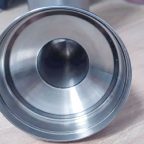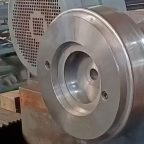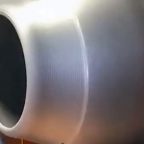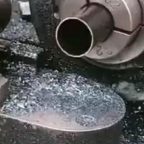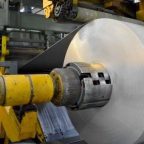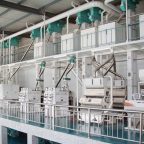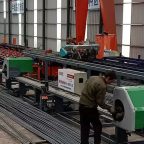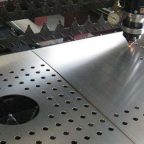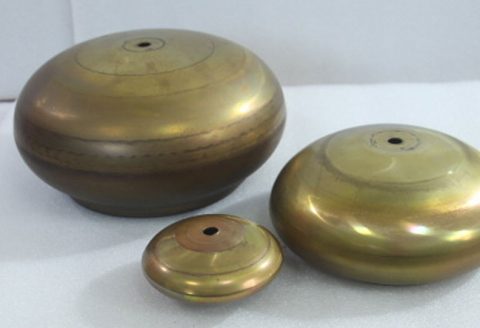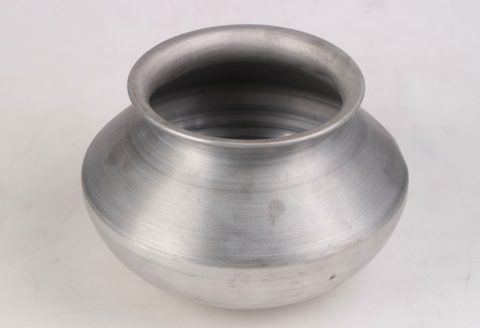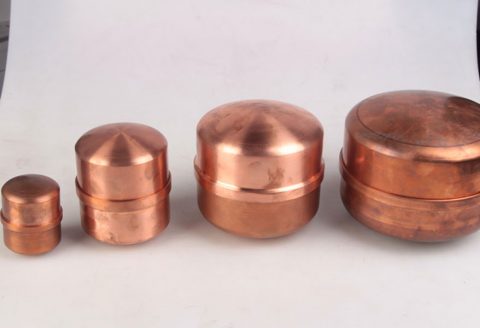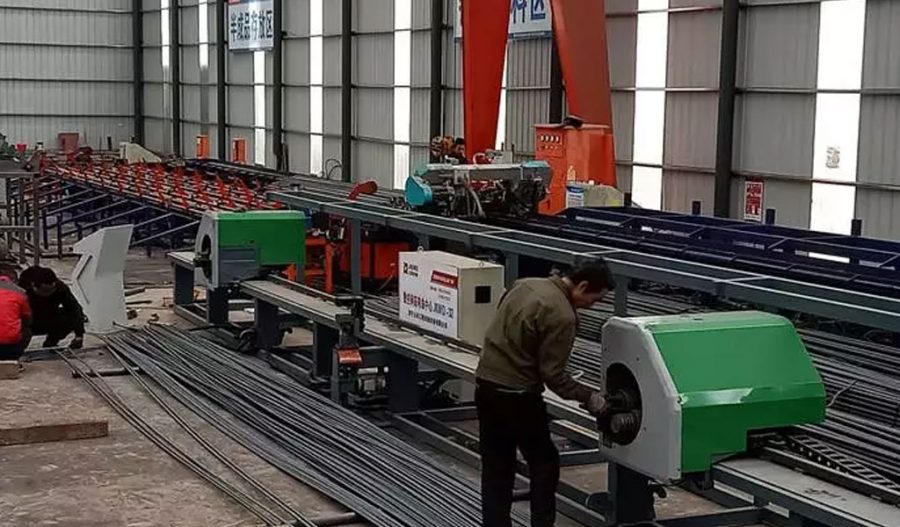
The development of advanced manufacturing techniques has driven significant interest in dissimilar metal composite materials, which combine the desirable properties of different metals to achieve superior mechanical, thermal, and chemical performance. These hybrid structures are critical in industries such as aerospace, automotive, and energy, where lightweight, high-strength, and corrosion-resistant materials are essential. A key challenge in the fabrication of dissimilar metal composites is achieving robust interfacial bonding, as the interface often dictates the overall mechanical integrity and performance of the composite. Among the various joining techniques, the spinning connection mechanism—a solid-state forming process—has emerged as a promising method for creating high-quality joints between dissimilar metals. This article explores the spinning connection mechanism, the evolution of interface strength, and the underlying laws governing these processes, drawing on extensive research to provide a comprehensive understanding of the topic. The discussion includes detailed analyses of microstructural evolution, mechanical properties, and the influence of process parameters, supported by comparative tables to elucidate key findings.
Fundamentals of Spinning Connection Mechanism
Overview of Metal Spinning
Metal spinning is a chipless forming process used to produce axisymmetric components by rotating a metal blank and applying localized deformation through a roller or tool. Unlike traditional forming methods like press forming, spinning requires lower forming forces, offers greater flexibility in tool design, and can produce components with enhanced surface finish and mechanical strength. The process is particularly advantageous for joining dissimilar metals, as it operates in the solid state, minimizing issues such as excessive heat input, which can lead to the formation of brittle intermetallic compounds (IMCs) at the interface.
In the context of dissimilar metal composites, spinning involves the deformation of two or more metal layers, typically in the form of sheets or tubes, to create a mechanically interlocked or metallurgically bonded interface. The process can be categorized into conventional spinning, shear spinning, and hot spinning, each with distinct mechanics and applications. Conventional spinning maintains the blank’s thickness while shaping it, shear spinning reduces thickness to form conical or cylindrical shapes, and hot spinning incorporates elevated temperatures to enhance material formability, particularly for high-strength alloys like titanium or magnesium.
Mechanics of Spinning for Dissimilar Metals
The spinning connection mechanism for dissimilar metals relies on the interplay of plastic deformation, frictional forces, and localized heating at the interface. When two dissimilar metals, such as aluminum and steel or titanium and nickel, are spun together, the roller applies compressive and shear stresses, causing material flow and interfacial bonding. The process induces complex stress states, including radial, tangential, and axial components, which influence the formation of the interface and its subsequent mechanical properties.
The primary mechanisms of bonding in spinning include:
- Mechanical Interlocking: The deformation of surface asperities creates physical interlocking between the metal layers, enhancing bond strength.
- Metallurgical Bonding: Atomic diffusion across the interface, facilitated by localized heating and pressure, forms a metallurgical bond, often accompanied by the formation of IMCs.
- Adhesive Bonding: In some cases, surface preparation (e.g., cleaning or coating) promotes adhesion at the interface, complementing mechanical and metallurgical bonding.
The success of the spinning connection depends on several factors, including the material properties of the metals (e.g., yield strength, ductility, and thermal conductivity), the spinning parameters (e.g., rotational speed, roller force, and temperature), and the interface preparation (e.g., surface roughness or interlayer coatings). These factors collectively determine the quality of the bond and the evolution of interface strength during and after the spinning process.
Challenges in Spinning Dissimilar Metals
Joining dissimilar metals via spinning presents several challenges due to differences in mechanical, thermal, and chemical properties. For instance:
- Thermal Expansion Mismatch: Differences in the coefficient of thermal expansion (CTE) between metals can lead to residual stresses at the interface, potentially causing delamination or cracking.
- Intermetallic Compound Formation: High temperatures during hot spinning can trigger the formation of brittle IMCs, such as FeAl₃ in steel-aluminum joints or TiNi₃ in titanium-nickel joints, which may reduce bond strength.
- Material Deformability: Metals with significantly different yield strengths or ductilities may deform unevenly, leading to defects such as voids or incomplete bonding.
- Interface Contamination: Surface oxides or contaminants can hinder diffusion and bonding, necessitating careful surface preparation.
These challenges necessitate a deep understanding of the spinning connection mechanism and the factors influencing interface strength evolution, which are explored in subsequent sections.
Interface Strength Evolution in Dissimilar Metal Composites
Definition and Importance of Interface Strength
Interface strength refers to the ability of the bonded region between two dissimilar metals to withstand mechanical loads, such as tensile, shear, or compressive stresses, without failure. It is a critical parameter in dissimilar metal composites, as the interface often represents the weakest link in the structure. Interface strength is influenced by the microstructure, chemical composition, and mechanical properties of the interfacial region, which evolve during the spinning process and subsequent service conditions.
The evolution of interface strength is governed by several mechanisms, including:
- Diffusion and Phase Formation: Atomic diffusion across the interface can lead to the formation of solid solutions, IMCs, or other phases that affect bond strength.
- Microstructural Changes: Grain refinement, recrystallization, or phase transformations at the interface can enhance or degrade mechanical properties.
- Residual Stresses: Stresses induced by deformation or thermal mismatch can influence crack initiation and propagation at the interface.
- Defect Evolution: The presence of voids, cracks, or inclusions at the interface can significantly reduce strength.
Understanding these mechanisms requires a multidisciplinary approach, combining experimental characterization, numerical modeling, and theoretical analysis.
Experimental Studies on Interface Strength Evolution
Numerous studies have investigated the interface strength evolution in dissimilar metal composites formed by spinning or related processes. For example, research on steel-aluminum joints has shown that the interface layer often consists of FeAl₃ IMCs, with shear strength increasing with bonding temperature due to enhanced diffusion. However, excessive temperatures (e.g., above 520°C) can lead to the formation of oxide layers or thicker IMCs, reducing bond strength. The addition of a zinc coating has been found to lower the bonding temperature and improve shear strength by forming Fe₂Al₅Znₓ and Al-Zn eutectic phases, which reduce interface brittleness.
In titanium-nickel composites, prolonged annealing increases the thickness of diffusion regions, initially decreasing tensile strength due to IMC formation but slightly increasing it after extended periods (e.g., 60 hours) due to homogenization. Fractography studies reveal a transition from brittle to ductile-brittle fracture modes, indicating the complex interplay between diffusion and mechanical properties.
Table 1 summarizes key findings from experimental studies on interface strength in dissimilar metal composites formed by spinning or diffusion bonding.
| Material Pair | Joining Method | Key Findings | Interface Phases | Shear Strength (MPa) | Reference |
|---|---|---|---|---|---|
| Steel-Aluminum | Diffusion Bonding | Shear strength increases with temperature; zinc coating reduces bonding temperature and improves strength | FeAl₃, Fe₂Al₅Znₓ, Al-Zn eutectic | 50–100 | |
| Titanium-Nickel | Spinning + Annealing | Initial tensile strength decrease due to IMC formation; slight increase after 60 h annealing | TiNi₃, TiNi, Ti₂Ni | 200–300 | |
| Ti6Al4V-SUS321 | Friction Welding | Tensile strength increases with friction time, max 560 MPa at 4 s | FeTi, Fe₂Ti, Ni₃(Al,Ti) | 560 | |
| Mg/Cu with Zn Interlayer | Ultrasonic TLP Bonding | Increased pressure intensifies metallurgical reaction; layered eutectic structure forms | MgZn, MgCu, CuZn, CuMgZn | 250–312 | |
| ODS-W/Cu | Spark Plasma Sintering | No IMCs at 980°C; max tensile strength at 312 MPa | None | 312 |
Theoretical Models of Interface Strength Evolution
Theoretical models provide insights into the mechanisms governing interface strength evolution. The flux-energy principle, for instance, explains the formation of IMCs at the interface based on the thermodynamic driving force and diffusion flux ratio. According to this principle, the phase with the largest thermodynamic driving force forms first, influencing the microstructure and mechanical properties of the interface. For example, in Ni/TC4 joints, the interface microstructure evolves as Ni/TiNi₃/TiNi/Ti₂Ni/TC4, with multiple IMCs forming simultaneously due to equivalent flux-energy conditions.
Molecular dynamics (MD) simulations have also been employed to study interface behavior, particularly in metal-ceramic composites. For Al/MgO systems, MD simulations reveal that coherent interfaces prevent misfit dislocation emission, while semi-coherent interfaces form rectangular mismatch dislocation networks, affecting plastic deformation and strength. These models highlight the role of lattice mismatch and interfacial coherency in determining bond strength.
Influence of Spinning Parameters on Interface Strength
Spinning parameters, such as rotational speed, roller force, and temperature, significantly influence interface strength. Higher rotational speeds increase frictional heating, promoting diffusion and metallurgical bonding but potentially leading to excessive IMC formation. Roller force controls the degree of plastic deformation and mechanical interlocking, while temperature affects material flow and phase transformations. Table 2 compares the effects of spinning parameters on interface strength for selected material pairs.
| Material Pair | Rotational Speed (rpm) | Roller Force (kN) | Temperature (°C) | Interface Strength (MPa) | Key Observations |
|---|---|---|---|---|---|
| Aluminum-Steel | 800–1200 | 5–10 | 400–520 | 60–100 | Higher speed increases diffusion but risks oxide formation above 520°C |
| Titanium-Nickel | 600–1000 | 8–15 | 500–600 | 200–300 | Optimal strength at moderate speeds; high temperatures increase IMC thickness |
| Mg/Cu | 500–800 | 3–7 | 300–450 | 250–312 | Pressure increase enhances metallurgical reaction; layered eutectic structure forms |
| Ti6Al4V-SUS321 | 1000–1500 | 10–20 | 600 | 419–560 | Post-weld heat treatment at 600°C enhances strength by homogenizing atoms |
Microstructural Evolution at the Interface
Mechanisms of Microstructural Evolution
The microstructure of the interface in dissimilar metal composites evolves through several mechanisms during spinning:
- Grain Refinement: The high shear strains induced by spinning lead to dynamic recrystallization, resulting in finer grains at the interface, which can enhance strength and ductility.
- Phase Transformations: Diffusion across the interface can trigger the formation of IMCs, solid solutions, or other phases, altering the mechanical properties.
- Defect Formation and Elimination: Voids, cracks, or inclusions may form due to uneven deformation or contamination but can be minimized through optimized process parameters.
- Residual Stress Development: Thermal and mechanical mismatches induce residual stresses, which can influence crack initiation and propagation.
For example, in steel-aluminum joints, the interface layer often consists of FeAl₃ IMCs, with zinc coatings promoting the formation of less brittle Fe₂Al₅Znₓ phases. In Mg/Cu joints with a Zn interlayer, the interface evolves from a fine granular eutectic structure to a layered eutectic structure as pressure increases, enhancing bond strength.
Characterization Techniques
Advanced characterization techniques are used to study microstructural evolution at the interface:
- Scanning Electron Microscopy (SEM): Provides high-resolution images of the interface morphology and fracture surfaces.
- Transmission Electron Microscopy (TEM): Reveals atomic-scale details of IMC formation and dislocation structures.
- Energy Dispersive Spectroscopy (EDS): Maps the chemical composition across the interface, identifying diffusion profiles and phase compositions.
- X-Ray Diffraction (XRD): Determines the crystalline phases present at the interface, such as IMCs or solid solutions.
- Electron Backscatter Diffraction (EBSD): Analyzes grain orientation and recrystallization behavior.
These techniques have been instrumental in elucidating the relationship between microstructure and interface strength. For instance, TEM studies of AA5083/AA6082/AA7075 aluminum alloy joints showed that microstructural evolution correlates with mechanical properties, with higher bonding temperatures enhancing diffusion but risking oxide formation.
Case Studies of Microstructural Evolution
- Steel-Aluminum Joints: Research indicates that the interface layer in steel-aluminum joints formed by spinning or diffusion bonding consists primarily of FeAl₃ IMCs. The addition of a zinc coating reduces the bonding temperature and promotes the formation of Fe₂Al₅Znₓ and Al-Zn eutectic phases, improving shear strength by up to 40% compared to uncoated joints.
- Titanium-Nickel Composites: Prolonged annealing of Ti/Ni composites leads to thicker diffusion regions, with phases such as TiNi₃, TiNi, and Ti₂Ni forming at the interface. The initial decrease in tensile strength is attributed to brittle IMC formation, but extended annealing (e.g., 60 hours) results in slight strength recovery due to homogenization.
- Mg/Cu with Zn Interlayer: Ultrasonic-induced transient liquid phase bonding of Mg/Cu with a Zn interlayer results in a complex interface microstructure, including MgZn, MgCu, CuZn, and CuMgZn phases. Increased pressure intensifies the metallurgical reaction, reducing weld seam width and promoting a layered eutectic structure.
Table 3 summarizes the microstructural evolution observed in various dissimilar metal pairs.
| Material Pair | Joining Method | Interface Phases | Microstructural Features | Reference |
|---|---|---|---|---|
| Steel-Aluminum | Spinning | FeAl₃, Fe₂Al₅Znₓ, Al-Zn eutectic | Fine granular structure; zinc coating reduces brittleness | |
| Titanium-Nickel | Spinning + Annealing | TiNi₃, TiNi, Ti₂Ni | Thicker diffusion regions with prolonged annealing | |
| Mg/Cu with Zn Interlayer | Ultrasonic TLP Bonding | MgZn, MgCu, CuZn, CuMgZn | Transition from granular to layered eutectic structure | |
| Ti6Al4V-SUS321 | Friction Welding | FeTi, Fe₂Ti, Ni₃(Al,Ti) | Convex-shaped interface on Ti side; IMC zone width up to 3 μm | |
| ODS-W/Cu | Spark Plasma Sintering | None | No microcracks or pores; diffusion distance up to 1.3 μm |
Influence of Intermetallic Compounds on Interface Strength
Formation and Role of IMCs
Intermetallic compounds (IMCs) are crystalline phases formed at the interface due to atomic diffusion between dissimilar metals. While IMCs can enhance metallurgical bonding, their brittleness often reduces interface strength, leading to failure under mechanical loads. The formation of IMCs is governed by the diffusion flux, temperature, and chemical compatibility of the metals involved.
For example:
- In steel-aluminum joints, FeAl₃ and Fe₂Al₅ are common IMCs, with FeAl₃ being more brittle and detrimental to bond strength.
- In titanium-nickel joints, phases like TiNi₃ and Ti₂Ni form, with their thickness and distribution affecting tensile strength.
- In Mg/Cu joints with a Zn interlayer, CuMgZn and Cu₅Zn₈ phases contribute to a layered eutectic structure, enhancing bond strength.
The growth of IMCs is temperature- and time-dependent, with higher temperatures and longer exposure times increasing IMC thickness. However, excessive IMC growth can lead to brittle fracture, necessitating careful control of spinning parameters.
Strategies to Control IMC Formation
Several strategies have been developed to control IMC formation and improve interface strength:
- Temperature Control: Maintaining bonding temperatures below critical thresholds (e.g., 520°C for steel-aluminum) minimizes IMC growth.
- Interlayer Addition: Using interlayers like zinc or nickel can alter diffusion kinetics, promoting less brittle phases.
- Surface Modification: Surface treatments, such as cleaning or coating, reduce oxide formation and enhance diffusion.
- Post-Processing: Post-weld heat treatment (PWHT) can homogenize the interface, reducing residual stresses and IMC brittleness.
For instance, spark plasma sintering (SPS) of ODS-W/Cu joints at 980°C prevents IMC formation, resulting in a tensile strength of 312 MPa and no microcracks or pores. Similarly, PWHT at 600°C for Ti6Al4V-SUS321 joints increases tensile strength from 117 MPa to 419 MPa by homogenizing aggregated atoms.
Modeling IMC Growth
Mathematical models, such as the diffusion-based model for IMC growth, describe the thickness of IMC layers as a function of time and temperature. The growth of an IMC layer can be approximated by the equation:
[ h = k \sqrt{t} ]
where ( h ) is the IMC layer thickness, ( k ) is the diffusion coefficient (temperature-dependent), and ( t ) is the diffusion time. The diffusion coefficient follows an Arrhenius relationship:
[ k = k_0 \exp\left(-\frac{Q}{RT}\right) ]
where ( k_0 ) is a pre-exponential factor, ( Q ) is the activation energy, ( R ) is the gas constant, and ( T ) is the absolute temperature. These models help predict IMC growth and optimize spinning parameters to achieve desired interface properties.
Advanced Joining Techniques and Their Relation to Spinning
Comparison with Other Joining Methods
While spinning is a versatile method for joining dissimilar metals, other techniques, such as diffusion bonding, friction stir welding (FSW), and spark plasma sintering (SPS), are also widely used. Each method has unique advantages and limitations, which are compared in Table 4.
| Joining Method | Advantages | Limitations | Typical Applications | Interface Strength (MPa) |
|---|---|---|---|---|
| Spinning | Low forming forces, high flexibility, enhanced surface finish | Limited to axisymmetric shapes; IMC formation at high temperatures | Aerospace components, automotive parts | 60–560 |
| Diffusion Bonding | Strong metallurgical bonding, minimal defects | High temperature and pressure requirements; long processing times | Turbine blades, heat exchangers | 50–300 |
| Friction Stir Welding | Solid-state process, avoids fusion defects | Limited to specific geometries; tool wear | Aluminum-polymer joints, aerospace panels | 90–295.7 |
| Spark Plasma Sintering | Rapid processing, minimal IMC formation | Expensive equipment; limited to small components | Nuclear energy components, ceramic-metal joints | 250–312 |
| Ultrasonic TLP Bonding | Fast processing, layered eutectic structures | Limited to specific material pairs; complex setup | Mg/Cu joints, electronic packaging | 250–312 |
Synergies with Spinning
Spinning can be combined with other joining methods to enhance interface strength. For example:
- Spinning + Diffusion Bonding: Combining spinning with diffusion bonding can create hybrid joints with improved mechanical interlocking and metallurgical bonding.
- Spinning + PWHT: Post-weld heat treatment after spinning homogenizes the interface, reducing residual stresses and enhancing strength.
- Spinning + Interlayer Addition: Using interlayers like zinc or nickel during spinning alters diffusion kinetics, promoting stronger bonds.
These hybrid approaches leverage the strengths of multiple techniques to overcome the limitations of spinning alone, such as IMC formation or geometric constraints.
Applications of Spinning in Dissimilar Metal Composites
Aerospace Industry
In aerospace, dissimilar metal composites are used to create lightweight, high-strength components such as turbine blades, structural panels, and heat exchangers. Spinning is particularly suited for producing axisymmetric components like turbine disks or engine casings, where aluminum-titanium or titanium-steel joints offer a balance of weight and strength. The ability to control IMC formation and enhance interface strength is critical for ensuring the reliability of these components under extreme conditions.
Automotive Industry
The automotive industry employs dissimilar metal composites to reduce vehicle weight and improve fuel efficiency. Spinning is used to fabricate components like drive shafts, exhaust systems, and suspension parts, where aluminum-steel or magnesium-aluminum joints are common. The high flexibility and low forming forces of spinning make it an attractive option for high-volume production.
Energy Sector
In the energy sector, dissimilar metal composites are used in nuclear reactors, heat exchangers, and renewable energy systems. For example, ODS-W/Cu joints produced by SPS or spinning are used in nuclear applications due to their high strength and resistance to thermal shocks. The ability to minimize IMC formation and defects is crucial for ensuring long-term performance in harsh environments.
Future Directions and Research Gaps
Emerging Trends
Recent advancements in spinning technology include:
- Hot Spinning: Using elevated temperatures to enhance formability of high-strength alloys like titanium and magnesium.
- Hybrid Processes: Combining spinning with additive manufacturing or laser-assisted bonding to create complex geometries and tailored interfaces.
- Smart Tooling: Developing adaptive toolpaths and real-time monitoring systems to optimize spinning parameters and improve bond quality.
Research Gaps
Despite significant progress, several gaps remain in the understanding of spinning connection mechanisms and interface strength evolution:
- Stress and Strain Evolution: The evolution of stress states and strain histories during spinning is not fully understood, particularly for complex geometries.
- Microstructure and Residual Stresses: The interplay between microstructure, residual stresses, and springback requires further investigation.
- Failure Mechanisms: The mechanisms of fracture and wrinkling in spinning are only partially understood, necessitating advanced damage mechanics models.
- Toolpath Design: Automated toolpath design for spinning remains an art, requiring further research to enable reliable, failure-free production.
Proposed Research Directions
To address these gaps, future research should focus on:
- Advanced Modeling: Developing finite element models with fine meshes to capture stress and strain evolution through the workpiece thickness.
- In-Situ Characterization: Using real-time X-ray radiography or synchrotron techniques to study interface evolution during spinning.
- Machine Learning: Applying machine learning to predict mechanical properties and optimize spinning parameters for specific material pairs.
- Novel Interlayers: Exploring new interlayer materials or coatings to control IMC formation and enhance interface strength.
Conclusion
The spinning connection mechanism offers a versatile and efficient approach for joining dissimilar metal composite materials, enabling the production of high-performance components for aerospace, automotive, and energy applications. The evolution of interface strength is governed by complex mechanisms, including diffusion, IMC formation, microstructural changes, and residual stresses. By optimizing spinning parameters and incorporating strategies like interlayer addition or post-weld heat treatment, researchers have achieved significant improvements in bond strength and reliability. However, challenges such as thermal expansion mismatch, IMC brittleness, and defect formation require ongoing research to fully unlock the potential of spinning for dissimilar metal composites. The comprehensive tables provided in this article highlight key findings from experimental and theoretical studies, offering a valuable resource for researchers and engineers working in this field. As advanced characterization techniques and modeling approaches continue to evolve, the spinning connection mechanism is poised to play a central role in the development of next-generation hybrid materials.
Maximize Tooling and CNC Metal Spinning Capabilities.
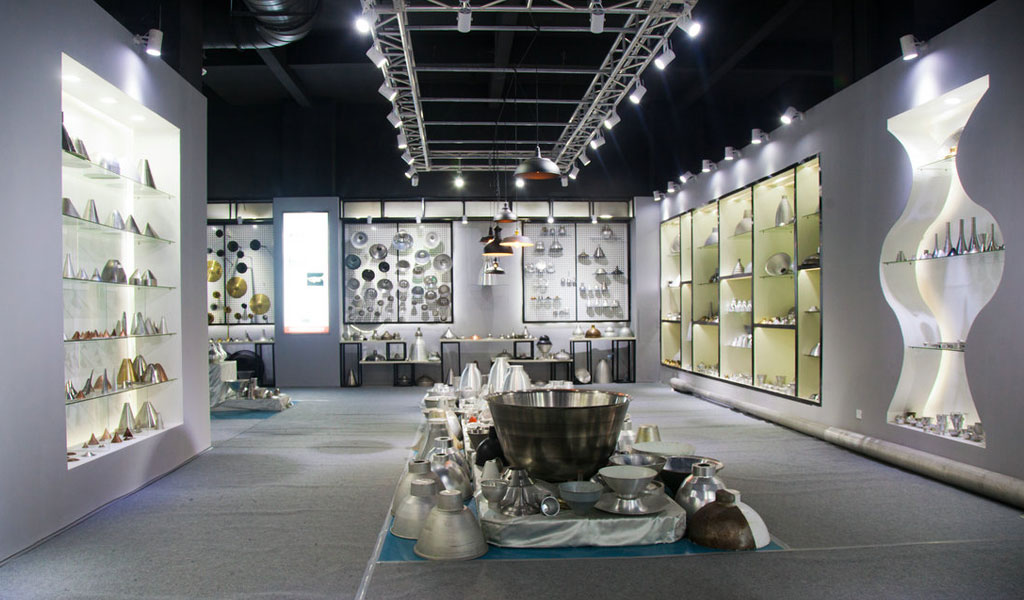
At BE-CU China Metal Spinning company, we make the most of our equipment while monitoring signs of excess wear and stress. In addition, we look into newer, modern equipment and invest in those that can support or increase our manufacturing capabilities. Our team is very mindful of our machines and tools, so we also routinely maintain them to ensure they don’t negatively impact your part’s quality and productivity.
Talk to us today about making a rapid prototype with our CNC metal spinning service. Get a direct quote by chatting with us here or request a free project review.
BE-CU China CNC Metal Spinning service include : CNC Metal Spinning,Metal Spinning Die,Laser Cutting, Tank Heads Spinning,Metal Hemispheres Spinning,Metal Cones Spinning,Metal Dish-Shaped Spinning,Metal Trumpet Spinning,Metal Venturi Spinning,Aluminum Spinning Products,Stainless Steel Spinning Products,Copper Spinning Products,Brass Spinning Products,Steel Spinning Product,Metal Spinnin LED Reflector,Metal Spinning Pressure Vessel,
